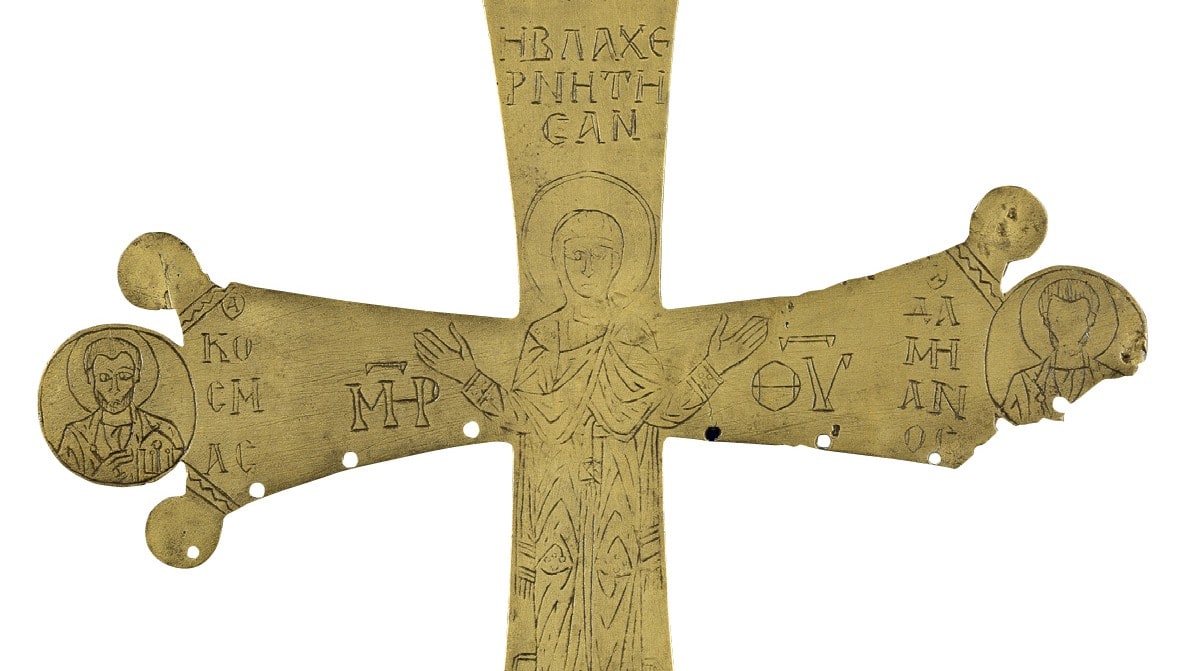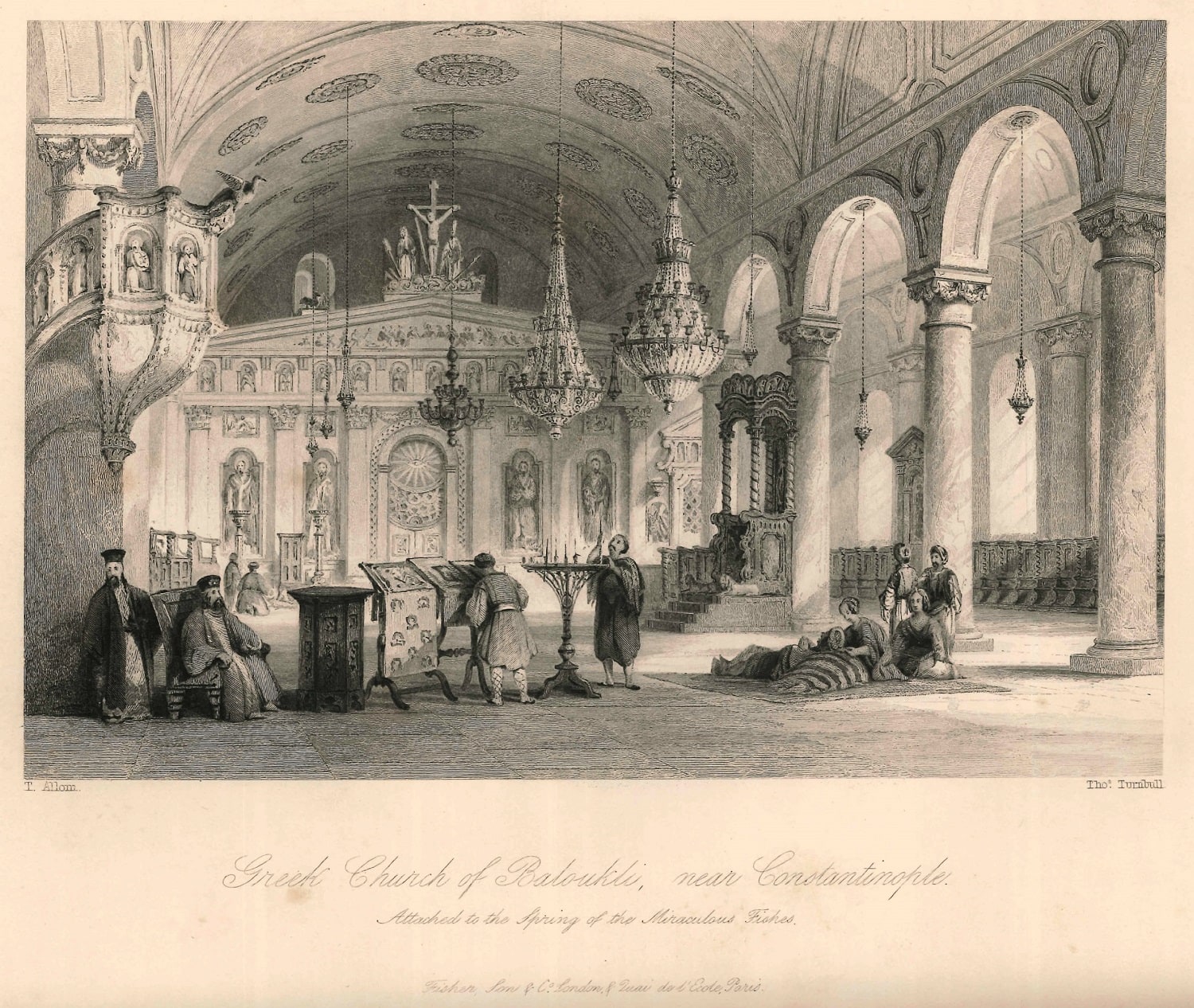27 March 2015

The shrines that created the glory of Constantinople through their lavish beauty were also repositories of precious relics and thus sources of healing. Early on, the city was placed under the protection of the Virgin, who sanctified the waters of numerous springs there. In addition to such all-encompassing healing places as the shrine of the physician saints Kosmas and Damian near Eyüp, there were also specialized shrines, like St. Artemios, for curing male diseases, and St. Anastasia, for mental illness.

Church of the Zoodochos Pege in Constantinople with the Sick Lying on a Mattress. London, 19th century. Steel Engraving, Private Collection.
Fear of pain, the surgical knife, hemorrhage, and infection led many among the faithful to turn to the saints, whose healing interventions were painless, immediate, and free of charge. Expressions of thanksgiving after miraculous cures contributed to shrines’ wealth and fame. Oftentimes, the imperial couple influenced devotional practices at healing shrines, as did Leo VI and Zoe, whose son Constantine VII Porphyrogennetos (b. 905) was born after the intervention of the Virgin of Pege.
- Brigitte Pitarakis, curator of Life Is Short, Art Long
Tuesday - Saturday 10:00 - 19:00
Friday 10:00 - 22:00
Sunday 12:00 - 18:00
The museum is closed on Mondays.
On Wednesdays, the students can
visit the museum free of admission.
Full ticket: 300 TL
Discounted: 150 TL
Groups: 200 TL (minimum 10 people)